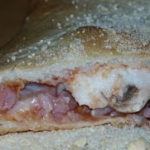Cooking at Elevation
While camped at Gunnison, Colorado, a fellow camper complained about her difficulties in preparing a pot of pasta the night before. I had to chuckle for her problem sounded familiar. If you have cooked a meal or even made a cup of coffee above 3,500 ft elevation can appreciate that camper’s frustrations with cooking at elevation.
The problem is a matter of physics. Simply put, the amount of sky above you (also called atmospheric pressure) has a direct effect on your cooking temperature. For you see, the higher you go up the mountain the lower the boiling temperatures and the longer cooking time. Remember your science teacher saying the boiling point of water is 212 degrees at sea level. It still is but in Denver, CO (elevation 5183 ft) water’s boiling temperature is 202.6 degrees and in Whitefish, MT (elevation 8,000 ft) it’s 196.6 degrees. This means it will just take longer to cook things at higher elevation. The remedy for my fellow camper? Bring water to a furious boil, add 3 to 5 minutes to the cooking time, and be patient.
Flour acts differently in high, dry mountain elevations, too. It becomes drier and will absorbs more of the liquid. To counter this problem, either reduce the amount of flour by a tablespoon per 2,500 feet increase in elevation or increase the amount of liquid called for by two tablespoons. A general rule of thumb I follow is not to reduce the amount of flour but use an extra large egg and add enough water to fill one side of the broken egg shell, which equals about two tablespoon. (For addition guidelines see adjustment chart below.)
Sugar is another ingredient that should be reduced in a recipe. It has something to do with the sugar’s molecules merging with the liquid. Just use the chart below as your guide.
The dry atmosphere and longer cooking time makes it necessary to use more liquid when cooking vegetables at elevation. And don’t try to hurry up the cooking time by increasing the flame. It just doesn’t work and you’ll probably end up with burnt, undercooked vegetables. Patience is the best ingredient for making cooking vegetables at elevation. One alternative is to steam vegetables. Another is to grill your vegetables but be sure to go slow over low temperatures.
When a recipe calls for baking powder or baking soda, a small decrease is necessary for good results. It’s another one of the chemical and molecule mystery things.
If you are still having problems with a recipe after making the following suggested adjustments, let me know and I’ll try to help.
| Ingredient | 3500 ft. | 5000 ft. | 6500 ft. | |
| baking powder/baking soda | decrease by | 1/4 teaspoon | 1/2 teaspoon | 3/4 teaspoon |
| sugar | decrease by | 1 Tablespoon | 2 1/2 Tablespoon | 3 1/2 Tablespoon |
| liquid | increase by | 2 Tablespoon | 3 Tablespoon | 4 Tablespoon |
| cooking temperature | increase by | 15 degrees F | 25 degrees F | 25 degrees F |
All temperatures given here and on the website are in Fahrenheit. To convert, use the following formulas:
Fahrenheit into Centigrade: Subtract 32, multiply by 5, divide by 9
Centigrade into Fahrenheit: Multiply by 9, divide by 5, add 32.






